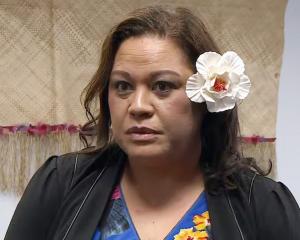Trying to contain half-wild Chatham Islands cattle, giving up farmland to help threatened skinks and coping with hordes of hungry shearers and builders who came to stay for several days have all failed to faze Cloverdowns owners Keith and Margaret Philip.
The property was originally a part of the Shag Valley Station inland from Palmerston.
It was separated from Shag Valley in the breakup of the big runs instigated by the Liberal government from 1893 to 1900 led by minister of lands Sir John McKenzie, who was also the local MP, representing the Palmerston-Waihemo area.
Cloverdowns then consisted of 1440ha (3600 acres).
It was settled by Jimmy Chapman and later sold to Rory Cameron, from whom John Philip bought it on April 2, 1910.
The stock book records that almost 2000 merinos and half-breds arrived on the property in 1910.
In 1914, a farm of 180ha was purchased at Puketapu near Palmerston.
John Philip and his wife, Betsy, who had been the teacher at the Stoneburn school, raised their family of five children at Puketapu.
Cloverdowns was then farmed as a run block from Palmerston.
John Philip's son Keith's interest in wool-classing was spurred by his teacher at Timaru Boys' High School, who was a wool-classer.
Keith's class were taken to see classing at a Timaru woolstore and he worked in a Dunedin woolstore for some months after he left school.
Since those days, Keith has always produced good wool.
He won the champion New Zealand fleece award given by the Royal Agricultural Society twice in the 1980s.
His World War 2 service was cut short, as his father died soon after he arrived in Egypt and Keith was ordered home to run the family farm.
There was a desperate shortage of food in Britain and not enough farmers and farm workers in New Zealand.
When Keith and Margaret Philip married in 1959, they moved up to Cloverdowns.
Bill Illingworth was employed as manager on the Puketapu farm.
Margaret Philip loved farm life.
Her favourite job was taking meals out to where Keith and the musterers were working.
When mustering and shearing was being done at the back of the farm, the Philips, their daughter Helen and the musterers would all move to a small cottage at the back of the farm until the work was done.
In 1961, the family bought a neighbouring 2600ha property from Joe Duley.
The whole of their farm was freeholded in 1988.
A Romney stud was established on Puketapu by Keith Philip and Bill Illingworth to supply lambs for Cloverdowns.
In the early days, fencing had been minimal on Cloverdowns, so it was a major task to fence the four main blocks.
Horses were used on the property up to the 1980s.
The use of farm bikes eliminated the 3.30am starts to saddle up the horses and ride up into the hills.
Aerial topdressing was introduced in the 1960s.
In 1999, the Department of Conservation (Doc) instigated a land swap with the Philips to protect the grand skink and the Otago skink, both of which had been found on Cloverdowns.
The farm subsequently acquired more suitable farming land, including some already worked grass paddocks.
The skink land which went to Doc was mainly tussock and rocky gullies.
The first cattle on Cloverdowns were Herefords introduced in the mid-1950s.
Hereford bulls from W.
M.
Harvey's Nenthorn stud were used.
In the 1960s, cattle from the Chatham Islands arrived at Cloverdowns.
The Chathams cattle were a challenge, Mr Philip recalled, as "the only boundaries they knew were the coast".
In 2008, there were 425 cattle on Cloverdowns and about 5000 sheep.
Mr Philip has always taken care not to overstock Cloverdowns.
Over the years, the buildings on the farm have changed markedly.
In 1969, a four-stand woolshed was built to replace the existing two-stand shed and, in 2002, a four-stand woolshed with covered yards to replace a four-stand shed which had petrol and belt-driven shearing plant was built out the back of the farmIn 1980, the Philips built a new house on Cloverdowns.
It was a classic wet-weather situation, Mrs Philip said.
The builders were due back to finish the house in the third week in January.
The shearers were due in the second week in January.
Bad weather meant they all arrived together and the builders stayed at Cloverdowns.
It was a constant succession of meals, she said.
For the past 20 years, because of their advancing age, Keith and Margaret Philip have been ably assisted on Cloverdowns by David and Nicky Vickery.
Mr Philip is confident about the future of farming, and that as the markets for primary products change, farming will change.












